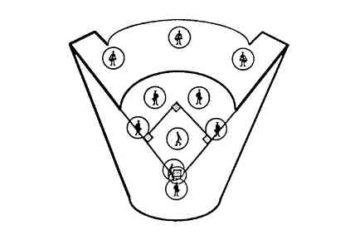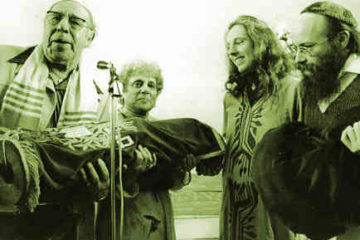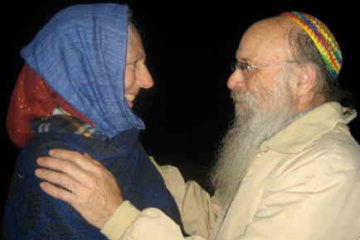for Rabbi Aaron, z’l
When I was twelve, thirteen, and fourteen years old, I became increasingly obsessed with painting my name on the walls of the bunks where I lived for eight weeks every summer. I was not the only camper at Delwood to enjoy this pastime, of course. As we grew older and moved from bunk to bunk each year, we were surrounded by more and more names some of ancient vintage: Stu Miller, 1947-1953, and some more recent: Stan Berg, 1952-55. It became only a matter of time before we’d catch the immortality bug – time and the presence of contraband art supplies.
The appearance of a little can of paint and a few brushes, purloined from the arts and crafts shop, gave us the opportunity to perpetuate our names – and the years during which we spent our summers in these wooden cabins – upon their bare interior walls. I must admit I probably outdid everyone in my frenzy. I covered every visible blank space with neatly printed, high contrast letters, spelling out “Robert Goldfarb, 1954″ (the year I first arrived at Camp Delwood, age 9) ” – 1959″ (probably the peak of my self-memorializing activity, age 14).
So it was that when the rabbi got wind of our home decorating schemes and paid us a call, I was the person he first addressed. “Robert,” he intoned, “do you write your name on the walls at home?” “No,” I answered. “Then why do you do it here?” No answer. “Do you want me to ask your parents to pay for painting it over?” “No.” A short lecture followed on respecting other people’s property; then he left. We hadn’t really had a discussion, and perhaps he didn’t really want one. I sensed no curiosity in him about my motivation, but I think I know now why he was so uptight. The fact is, I was carrying out, for free, what his grown-up congregants were paying for.
It first hit me, big-time, when I visited my late parents’ synagogue during a trip to their last neighborhood – Murrieta Hot Springs, California – and Congregation B’nai Chaim. You want to know who writes on walls, Rabbi, and not just at home but in shul? Adults, Rabbi. And not with paint, Rabbi. Engraved in brass and in stone, on the walls and the doorways, on the office and classroom doors, on the very chairs in the sanctuary, on the covering for the bima, and on the curtain for the ark! Everywhere there’s room to write, Rabbi, some Jewish adult is paying to have – and here’s the difference, I know it -paying to have a loved one’s name inscribed or embroidered. Yes, Rabbi, I admit it, these are memorial plaques, reminders of a sainted or ordinary beloved person, gone except in memory, held onto, through this gesture, by a survivor – a husband or wife, son or daughter, brother or sister. That’s the Jewish way!
And I, Rabbi, I had not only not paid a penny, but I had attempted to glorify myself, to perpetuate my name. No wonder you were so indignant, Rabbi. What had I done to earn the right?
16 Tishrei, 5754
Chag Sukkot
October 1, 1993
Published in Tikkun Magazine (July/August 1997) with the following biographical note:
Reuven Goldfarb is founding editor of AGADA, the illustrated Jewish literary magazine, and interim Shomer of The Aquarian Minyan, in whose
newsletter this piece previously appeared. He teaches English at Merritt College in Oakland and lives in Berkeley with his wife and two sons.


